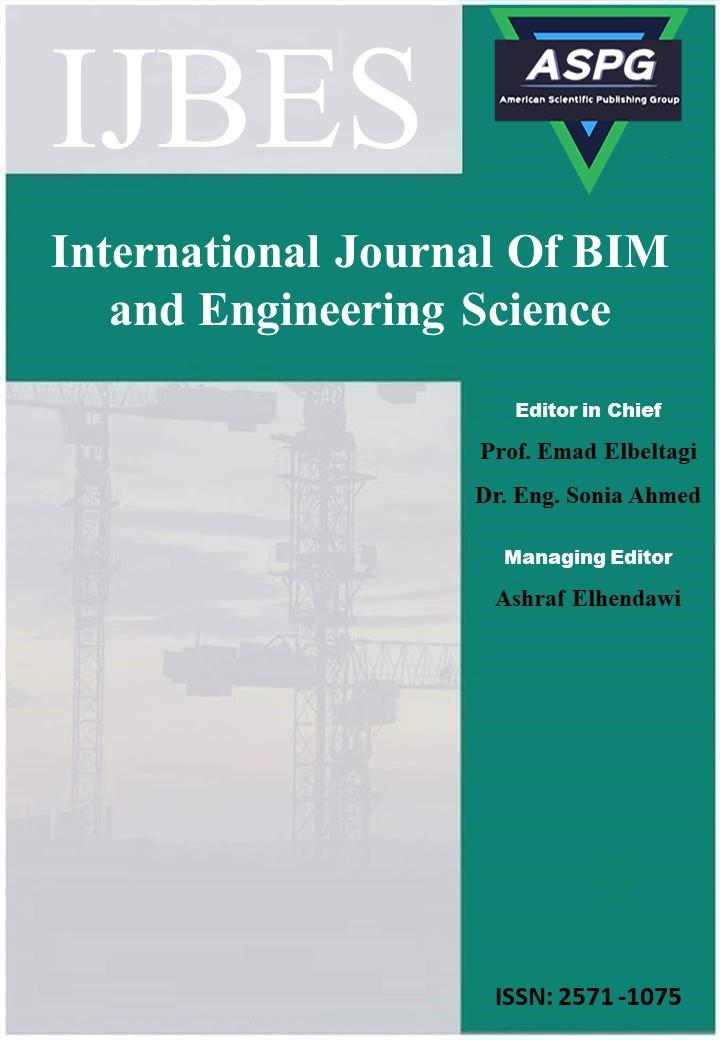

Volume 10 , Issue 2 , PP: 38-47, 2025 | Cite this article as | XML | Html | PDF | Full Length Article
Mary Abou Sekka 1 * , Naoras Khalil 2 , Alaa J Kadi 3
Doi: https://doi.org/10.54216/IJBES.100204
This research aims to study the impact of building materials modeling on enhancing building sustainability through a case study of a residential building within the Basilia City planning scheme in Damascus, which is being transformed into a sustainable area using sustainable design techniques. The study is based on analyzing plot EA-189 in the Kfar Sousseh area by evaluating the thermal efficiency of the proposed building materials and comparing them with other materials using the Insight Solar tool in Autodesk Revit.The study involves analyzing three scenarios using different building materials: (1) Concrete blocks with air insulation and a bituminous insulated roof, (2) Brick with fiberglass insulation and a green roof, (3) A mix of brick and concrete blocks on different facades and a green roof. The results show that the second scenario provides the highest energy efficiency and best indoor air quality, despite its higher cost. The third scenario, which combines brick and concrete blocks, offers a balance between energy efficiency and cost, making it the optimal choice for future construction projects. The study demonstrates that building information modeling (BIM) enhances the effectiveness of sustainable design strategies and contributes to improved energy performance and environmental comfort of buildings.
Building Sustainability , Sustainable Design Techniques , Building Information Modeling (BIM) , Thermal Efficiency , Energy Efficiency in Buildings , Green Building Materials , Thermal Insulation.
[1] Lazaretti, K., Giotto, O.T., Sehnem, S., Bencke, F.F, Building sustainability and innovation in organizations. Benchmarking: An International Journal, 2020. 27(7): p. 2166-2188.
[2] Hajian, M. and S.J. Kashani, Evolution of the concept of sustainability. From Brundtland Report to sustainable development goals, in Sustainable resource management. 2021, Elsevier. p. 1-24.
[3] Chen, L., Hu, Y., Wang, R., Li, X., Chen, Z., Hua, J., Osman, A.I., Farghali, M., Huang, L., Li, J., Dong, L, Green building practices to integrate renewable energy in the construction sector: a review. Environmental Chemistry Letters, 2024. 22(2): p. 751-784.
[4] Raad, L., R. Maya, and P. Dlask, Incorporating BIM into the Academic Curricula of Faculties of Architecture within the Framework of Standards for Engineering Education. International Journal of BIM and Engineering Science (IJBES), 2023. 6: p. 08-28.
[5] Chang, Y.-T. and S.-H. Hsieh, A review of Building Information Modeling research for green building design through building performance analysis. Journal of Information Technology in Construction, 2020. 25.
[6] Kalajian, K., S. Ahmed, and W. Youssef, BIM in infrastructure projects. International Journal of BIM and Engineering Science, 2023. 6(2): p. 74-87.
[7] Ijjada, N. and R.R. Nayaka, Review on properties of some thermal insulating materials providing more comfort in the building. Materials Today: Proceedings, 2022. 58: p. 1354-1359.
[8] Simpeh, E.K., Pillay, J.P.G., Ndihokubwayo, R, Improving energy efficiency of HVAC systems in buildings: A review of best practices. International Journal of Building Pathology and Adaptation, 2022. 40(2): p. 165-182.
[9] Alsuhaibani, A.M., Refat, M.S., Qaisrani, S.A., Jamil, F., Abbas, Z., Zehra, A., Baluch, K., Kim, J.G, Green buildings model: Impact of rigid polyurethane foam on indoor environment and sustainable development in energy sector. Heliyon, 2023. 9(3).
[10] Zhang, Z., Chen, J., Gao, Y., Ao, Z., Li, G., An, T., Hu, Y., Li , Y, A coupled technique to eliminate overall nonpolar and polar volatile organic compounds from paint production industry. Journal of Cleaner production, 2018. 185: p. 266-274.
[11] MacNaughton, P., Cao, X., Buonocore, J., Cedeno-Laurent, J., Spengler, J., Bernstein, A., Allen, J, Energy savings, emission reductions, and health co-benefits of the green building movement. J. Expo. Sci. Environ. Epidemiol, 2018. 28(4): p. 307-318.
[12] Cui, X., Mohan, B., Islam, M.R., Chou, S.K., Chua, K.J, Energy performance evaluation and application of an air treatment system for conditioning building spaces in tropics. Applied Energy, 2017. 204: p. 1500-1512.
[13] Ahmed, S.S., Innovation of building processes in Syria by using BIM. 2018, Czech Technical University.
[14] Moghaddam, S.A., Serra, C., Gameiro da Silva, M., Simões, N, Comprehensive review and analysis of glazing systems towards nearly zero-energy buildings: energy performance, thermal comfort, cost-effectiveness, and environmental impact perspectives. Energies, 2023. 16(17): p. 6283.
[15] Murshed, M., Can regional trade integration facilitate renewable energy transition to ensure energy sustainability in South Asia? Energy Reports, 2021. 7: p. 808-821.
[16] Hoffmann, S., Challenges and opportunities of area-based conservation in reaching biodiversity and sustainability goals. Biodiversity and Conservation, 2022. 31(2): p. 325-352.